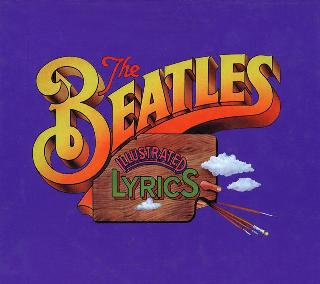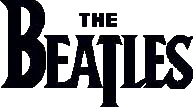Index
Home
Vorige
I'll Get You
Composer(s) : Lennon and McCartney
Year : 1964
Chords/Tabs: I'll Get You
Notes on "I'll Get You" (IGY)
KEY D Major
METER 4/4
FORM Intro -> Verse -> Verse -> Bridge -> Verse -> Outro (complete ending)
GENERAL POINTS OF INTEREST
Style and Form
- This is an extremely straighforward if not plain-and-simple song in terms
of almost any compositional metric by which you'd want to measure it. And
*still*, it is full of trademark details which indelibly mark it as as an
early Beatles song.
- Both the higher-level form and the inner construction of the individual
sections are quite standard, though the manner in which the "Oh yeah!"
motif of the intro is worked smoothly into the flow of the verse is a
clever touch.
Harmony
- The song is firmly, unrelievedly in the key of D Major and only about a
half-dozen chords are used throughout. In this light, the number of chords
which appear with spicy embellishment is notable; e.g. the added sixth
chord on I (D), a Major seventh on IV (G), and a dominant 7/9 chord on
the V-of-V (E).
- Most unusual and forward-looking in terms of what would later emerge as
a favorite item in the Beatles bag of harmonic tricks is the use of a
minor v chord in the verse section (measure 10), despite the Major mode
of the home key; thus adding a surprise modal/bluesy inflection to the music.
Arrangement
- The arrangement has a rather nondescript backing track, yet paradoxically
(or should we say, inconsistently) sports a number of fussy details.
- Although the bass part is both active and prominently mixed forward, the
rhythm guitar and drums for the most part get to do no more than strum or
stroke (as the case may be) in even eighth notes. Furthermore, to my ears
at any rate, there's no sign of a part for lead guitar; where indeed was
George that day ?
- The harmonica is used differently here from what we've become used to in
other Beatles songs. On the one hand, the harmonica does *not* get to play
any memorable hook phrase, but it *does* appear unsparingly used throughout,
except for a brief rest during the bridge. To the extent that John too
sings throughout, I've got to assume that this harmonica part was overdubbed
separately; or else, maybe that's what George was playing for this
session :-).
- The sort of handclaps seen earlier in LMD and
ISHST appear here only in the
intro as a surrogate percussion part. Conversely, it is not until the end
of the intro that the drums, with a solitary little fill, make their entrance.
- John and Paul sing a duet literally throughout, so that variety is provided
by the two voices alternating frequently between singing in unison, at the
octave, and in brief yet colorful splashes of 2-part harmony.
SECTION-BY-SECTION WALKTHROUGH
Intro
- In only four measures, this intro establishes the key and introduces the
"oh yeah" hook phrase that recurs both at end of each verse and in the outro.
- The same dotted rhythmic figure seen earlier in
TAP to convey self-assurance
is used here to similar effect. It appears right off in the bass part of
this intro and is used frequently in the melody of both verse and bridge
sections.
Verse
- The verse is sixteen measures long and built out of four phrases equal in
length:
m.1
|D |- |G |A ||D |b |G |A ||
D: I IV V I vi IV V
m.9
|D |a |D |b ||G |A |D |A ||
I v I vi IV V I V
- The number of melodic appoggiaturas is pervasive, thematic, and a large
part of the reason for all the embellished chords mentioned above; it makes
for an interesting comparison with the later
WCWIO. Examples here include:
- the use of B in the melody on top of the D chord in measures 2 and 11,
- the F# on top of the A chord in measures 4, 8, and 14,
- the E on top of the D chord in measures 5, and
- the G on top of the D chord in measure 9
- Melodically, each eight-measure pairing of phrases presents its own symmetric
arch. As a matter of good dramatic practice, the higher melodic peak is
saved for the second of the two arches.
Bridge
- This bridge is a rather archtypal middle eight in which, instead of
harmonic modulation, we simply converge back toward the home key after
starting the section away from it. Note in particular the drawn out
build up toward the V chord:
|G7 |- |D |- ||E9 |- |A |- ||
7
IV I V-of-V V
- We have a wonderful demonstration here of the powerful effect that harmony
can have on your perception of the melody which it accompanies; hardly a
phenomenon unique to the Beatles, but this just happens to be an unusually
good "textbook" example. To wit, the melody of this bridge contains the
same three note descending figure (f# -> e- > d) repeated three times,
each time over a different chord (G, D, and E); and note, how different
in a rhetorical sense the melodic figure sounds with each change of chord.
- There is an obvious word collision between the singers in this section
followed by what sounds like a very brief instant of confusion (perhaps one
of them thought to stop) before composure was regained. With examples
like this, who needs outtakes ? :-)
Outro
- As with both verse and bridge, this outro is a fairly standard specimen
of its genre; growing directly out of the end of the final verse and
repeating the last phrase three times.
- The harmonica is left still sounding after all else has halted.
SOME FINAL THOUGHTS
- I don't know if I can use the following term without sounding more harsh
than intended, but I'll dare say that "I'll Get You"
was a bit of a "pot boiler." It was originally released as the B-side
to "She Loves You", and
both the music and recording of IGY have definite earmarks of a rush job
which they must have assumed nobody would ever notice; I can just imagine
someone in the studio wondering aloud to the effect of, "who listens to
the B-side of 'single', anyway ?"
- That's not to say that it's necessarily not a "good" song; merely that
mapped against the steep growth trajectory they had so quickly established
for themselves by this point, IGY, if not entirely off the pace, surely
catches them in the act of treading water.
- The impressive aspect of this which should not be lost sight of is that
they had by this point established for themselves not only a "name" but
also a genuine musical style, more than just a bunch of hackneyed mannerisms.
And that on their ocassional off day in which they really might not mind
being more derivative than original for a change, this song demonstrates
that they already had their own unique set of ingredients from which to
crib and re-fashion.
Regards,
Alan (awp@bitstream.com *OR* uunet!huxley!awp)
---
"The office was on the phone, they think it'd be better if we pushed straight
to Wolverhampton ... you've got a midnight matinee." 090391#34
--
Copyright (c) 1991 by Alan W. Pollack
All Rights Reserved
This article may be reproduced, retransmitted, redistributed and
otherwise propagated at will, provided that this notice remains
intact and in place.
Ook op Past Masters, Vols. 1:
Ook op On Air - Live At The BBC Vol 2:
(c) 2024 Serge Girard


 (c) Alan Aldrigde, The Beatles Illustrated Lyrics
(c) Alan Aldrigde, The Beatles Illustrated Lyrics